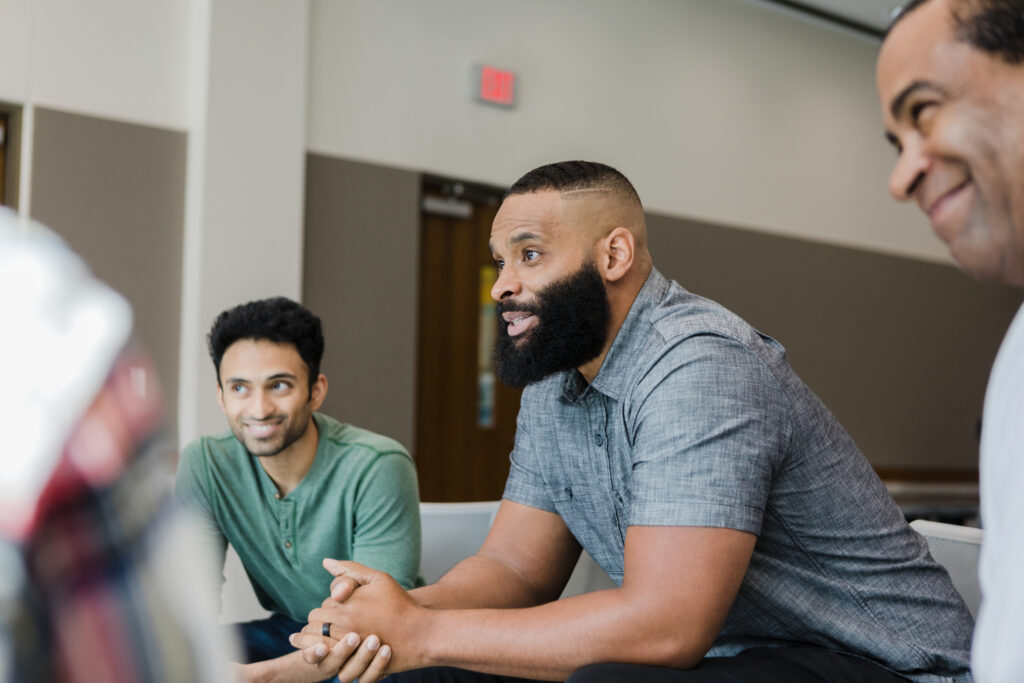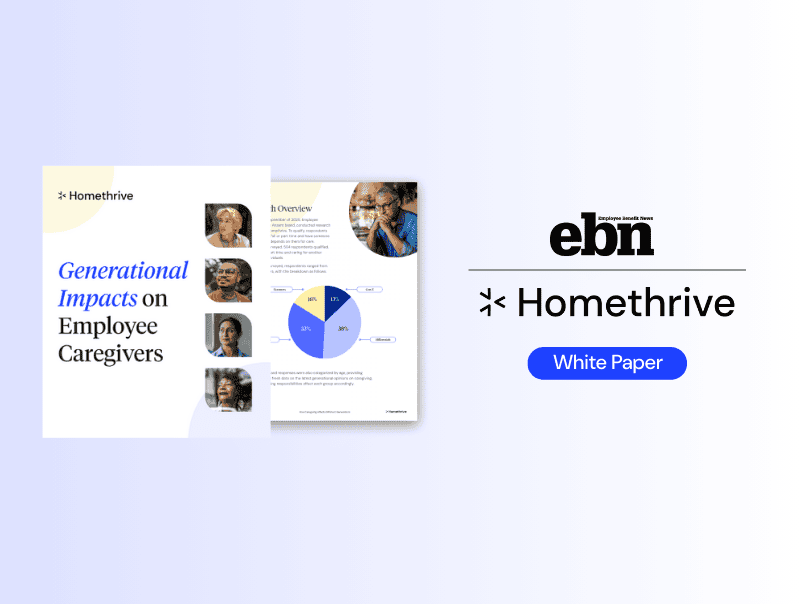Approximately 53 million adults in the U.S. provide unpaid care to senior or disabled family members. While many family members provide live-in care, others provide equally important part-time care. Recognizing yourself as a caregiver may help you better state your needs to your employer and others. Recognizing the different kinds of caregiving your employees are doing may help you provide better support for them.
What is a Caregiver?
A caregiver is anyone that provides support for a loved one that needs assistance with managing healthcare, home safety, activities of daily living (ADLs), or instrumental activities of daily living (IADLs). A caregiver can be categorized as anyone who helps provide care for the following: an aging parent or grandparent, a partner or friend that needs assistance with their health or wellness, or a child with a learning disability or complex medical needs.
Caregivers can be part-time, full-time, or long-distance, and may assist in activities like arranging transportation, communicating with doctors, doing chores or running errands, finding long-term care facilities or in-home services, scheduling appointments, or providing company and emotional support.
There are several ways to be a caregiver, and the title may not always be obvious at first glance. By breaking down some of the most common caregiving responsibilities, you may begin to see how common this role is among your employees.
The Sandwich Generation
The Sandwich Generation is not a time-based generation like “Millennials” or “Baby Boomers.” Instead, the Sandwich Generation is generally considered to be anyone who is caring for both children (or teens) at home and older parents, wherever they live. They are called “sandwich” because of the difficulties of being squeezed between competing needs. Sandwich generation caregivers can be entry-level workers in their 20s or c-suite executives in their 50s or 60s. These caregivers often need flexibility, understanding, and opportunities to destress. Parent and caregiver ERGs can often provide needed information and support.
Live-in Caregivers
Whether caring for a disabled child or an older parent, live-in caregivers have a lot of responsibility. Live-in caregivers can be temporary (for example after an illness or injury) or permanent for a disabled child or adult. Being a live-in caregiver can be rewarding, but also leave you feeling overwhelmed. These caregivers often need flexibility, understanding, and extra support. Hybrid or remote work can allow live-in caregivers to maintain their careers and still care for their loved one.
Long Distance Caregivers
Just because your parents or other loved ones don’t live with you doesn’t mean that you don’t spend a lot of time caregiving. Making decisions or offering advice from afar can often be more stressful as you don’t have a full picture of the situation. Long distance caregivers may need more flexibility in Paid Time Off (PTO) so that they can visit their parents or loved ones and still have time to decompress.
Chefs and Chauffeurs
Many people do not need constant caregiving but are unable to cook for themselves or drive. This kind of caregiving can be expensive and time consuming, but also very fulfilling. Driving a loved one to a doctor’s appointment can also help you get more information about their condition. Chefs and chauffeurs appreciate flexibility, and benefits such as access to nutrition information or discounts on meal services or transportation services.
The Handyperson
Even if the older people in your life are independent, physically and mentally fit, you probably find yourself taking on more and more tasks. Maybe you come by the house to install an air conditioner, maybe you find yourself suddenly in charge of all computer repairs, or researching everything from new roofs to available services. These are all forms of caregiving that can help you feel closer to your loved ones and keep an eye on how their needs are changing. Employees with these kinds of responsibilities often need flexible start and end times to work. A caregiver ERG may be especially helpful to these employees as they can help them find solutions and answers to common issues.
The Researcher
From education plans, to senior living, to necessary legal documents and insurance, there are plenty of details that caregivers need to discover as their loved one’s needs evolve. This research often requires hours of work to puzzle out local resources or cost savings, and can eventually become a full-time job as more services are required. Providing workers with caregiving benefits provides them with tools for discovering products and services, along with a social worker that can take much of the research off of their plate.
The Designated Caller
Many older people find talking on the phone difficult. Even if your loved one is perfectly healthy, you may find yourself making phone calls about appointments or services. Because these calls often need to be made during business hours, employees with these responsibilities often appreciate being able to work from home at least part of the time, of flexibility in their hours. Caregiving benefits can also help cut down on the number of phone calls that need to be made as a social worker makes calls on their behalf.
Nurses and Accountants
Medical and financial issues are two of the scariest responsibilities to handle for your loved ones. Protecting an elder’s financial and physical health are two of the most important things you can do, but unless you are a trained medical or financial professional, you may feel ill-equipped to do so. Employees with these responsibilities may appreciate a Caregiver ERG as well as access to trained professionals to help them handle questions. For example, Homethrive provides access to Care Guides, trained social workers that can help navigate Medicare, Medicaid, health insurance, new diagnoses, and hospital discharge.
The Cruise Director
The importance of healthy connections for anyone, but especially the disabled and older adults can’t be overstated. Social connections are essential for both mental and physical health. Unfortunately, some disabilities make it harder to form connections and that means that a caregiver is often needed to seek out opportunities and make plans. While this task can be enjoyable, it can also be time consuming and leave one feeling like they don’t have time for their own social life. Employees with these responsibilities often enjoy a hybrid work environment that allows them to socialize with coworkers. A caregiver ERG can also be helpful as a way to find new opportunities for their loved ones and themselves.
The Relief
In many families one person provides regular, live-in care and is occasionally relieved by another relative who provides respite care. Respite care providers often feel they are “not doing enough” compared to the main caregiver. However, they are necessary parts of a caregiver plan. Employees with these responsibilities often need flexibility in PTO policies so that they can help their families and still have vacation time for themselves.
There are many different kinds of caregivers, all of whom are important parts of both a family and an organization. Learning what needs your employees have and how you can help meet them will increase employee retention and employee engagement.
Find out more ways to support your employee caregivers by learning about the benefits that can help. To receive caregiving benefit insights delivered straight to your inbox, sign up for our weekly newsletter.







